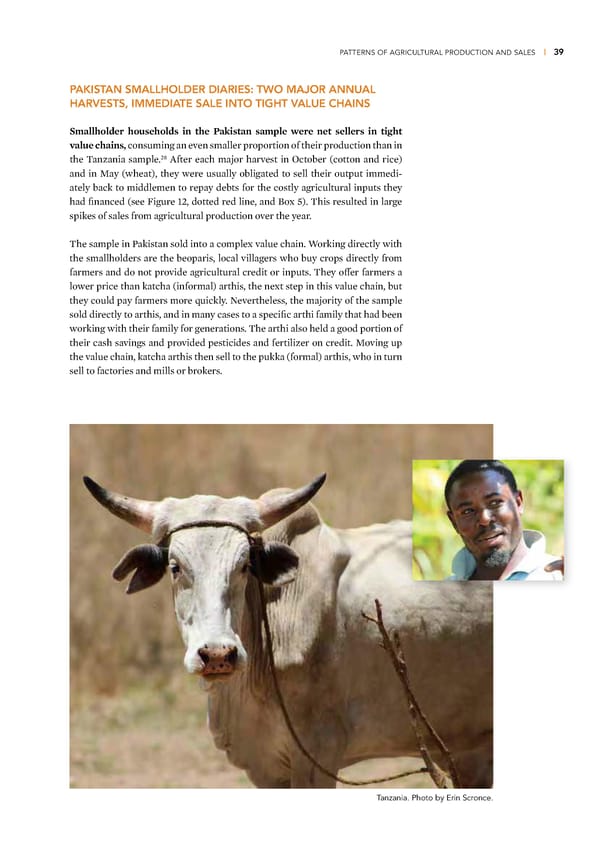PATTERNS OF AGRICULTURAL PRODUCTION AND SALES | 39 PAKISTAN SMALLHOLDER DIARIES: TWO MAJOR ANNUAL HARVESTS, IMMEDIATE SALE INTO TIGHT VALUE CHAINS Smallholder households in the ‚aƒistan sample were net sellers in tight alue chains, consuming an even smaller proportion of their production than in ‘¡ the Œan—ania sample ˆfter each ma„or harvest in ¦ctober (cotton and rice) and in –ay (wheat), they were usually obligated to sell their output immedi- ately bac to middlemen to repay debts for the costly agricultural inputs they had financed (see igure …‘, dotted red line, and £ox ”) Œhis resulted in large spies of sales from agricultural production over the year Œhe sample in aistan sold into a complex value chain ™oring directly with the smallholders are the beoparis, local villagers who buy crops directly from farmers and do not provide agricultural credit or inputs Œhey offer farmers a lower price than atcha (informal) arthis, the next step in this value chain, but they could pay farmers more uicly ˜evertheless, the ma„ority of the sample sold directly to arthis, and in many cases to a specific arthi family that had been woring with their family for generations Œhe arthi also held a good portion of their cash savings and provided pesticides and fertili—er on credit –oving up the value chain, atcha arthis then sell to the pua (formal) arthis, who in turn sell to factories and mills or broers Tanzania. Photo by Erin Scronce.
 Financial Diaries with Smallholder Families Page 52 Page 54
Financial Diaries with Smallholder Families Page 52 Page 54